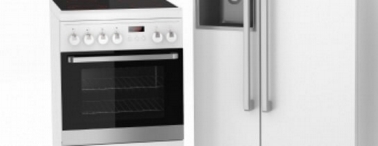
You have decided that now is the time for a kitchen renovation. But before embarking on this project, one of the largest and most important home improvement projects you'll ever do, it's essential to prepare. And this kitchen renovation checklist will help you understand the various stages of this remodel, allowing you to make the best decisions in terms of quality and budget.
Do you want to know what happens during a kitchen renovation? Keep this kitchen renovation checklist close at hand during every stage of the project, so you'll know what to expect day by day.
Stage 1 - Tear Down and Disposal
Your new kitchen has been designed, all applicable building permits have been applied for, and the materials are ready for delivery. The first stage of the actual renovation involves tearing out the old kitchen and disposing of all materials that cannot be reused.
Some companies offer kitchen cabinet removal services. Contact your local salvaged building materials retailer to find out whether this service is available in your area. Homeowners often take on this job to reduce overall costs, but beware that a kitchen tear down can get complicated, and disposal fees are charged by the weight.
Stage 2 - Structural Repairs
Repairs are often necessary once the cabinetry, tile backsplash and flooring have been removed. You can expect to see holes in the drywall that require patching, gouges, scrapes and scratches in the walls and subfloors and ceiling damage that must be fixed up before the kitchen renovation can proceed.
It's best to clean up the area completely prior to any inspection. This allows your contractor to have a good look at the damage, and properly plan for structural repairs that will provide support for your new kitchen features.
Stage 3 - Assess the Electrical and Mechanical Systems
New kitchen lighting requires additional wiring or rewiring. Be sure to hire an electrician for this project, or ask your kitchen renovation contractor to subcontract the work to a licensed electrician. Moving existing appliances and installing new appliances also requires electrical work. Consider whether adding under-cabinet lights or potlights will help to create a brighter workspace.
Mechanical systems also need attention at this stage. Modern efficiency standards require large ductwork over the stove and/or microwave. This creates better airflow in your new kitchen and provides higher levels of safety for your family. Often the electrician can design and install these systems to follow the local building codes.
Stage 4 - Assess the Plumbing
Plumbing plays a major role in your kitchen, and it's important to assess the design before installing cabinets or other major features. Plumbing will run to the kitchen sinks, dishwasher, and possibly the fridge. Gas lines may also need to be run to the stove or oven.
Always hire a licensed plumber to assess and install your plumbing system. Faulty connections, undersized pipes and inefficient design create serious problems, potentially damaging all of the new materials installed during your kitchen renovation.
Stage 5 - Install Cabinets
This is when your new kitchen begins to truly take shape. Cabinets mount on the walls and are attached to the subfloor, providing the bones of your kitchen. These structures support your counters, appliances and sinks, as well as provide storage and hide the plumbing and electrical running through this busy room.
Always choose the highest quality cabinet possible in terms of budget, and opt for cabinet doors that provide a neutral backdrop. Handles and hardware can be anything from invisible to elaborate, it depends entirely on your preferences.
This is also the stage where trim, rails for lighting, closers and any other cabinet accessories are installed. These elements often push the price of new cabinets beyond what homeowners expect, so be sure to understand what you're paying for and only opt for the design and accessories that best suit your home and lifestyle.
Stage 6 - Install Counters
Countertops should be durable, easy to maintain and attractive. Whether you opt for high quality laminate or invest in natural stone counters such as granite or marble, this element of your kitchen renovation will have a major impact. The right countertop will complete the room, while a lower quality material or improper installation can wreck the look and feel of your home.
Your contractor has the skills to install any type of countertop. Corners, joints and end pieces are important and need to be handled with care, ensuring minimal gaps and proper sealing. Undermount kitchen sinks are the latest style, while many designs continue to call for traditional flush-mount stainless steel sinks or large white farm-style sinks. If a stand-alone range is part of your kitchen design, ensure the counters fit neatly around this feature.
Stage 7 - Backsplash & Flooring Installation
Tiles are often used to create a stylish, low maintenance backsplash. Compliment that design with tile flooring in natural stone, ceramic or porcelain. You're not limited to tiling on either the floor or the backsplash - consider creating a modern look with tin panels on the wall and engineered hardwood on the floor or opting for a recycled glass backsplash and cork flooring for an eco friendly kitchen remodel.
Backsplash and flooring are permanently installed using the latest methods. Your kitchen contractor will have expertise in this project, and should offer a warranty on both installation and materials.
Stage 8 - Install Appliances
Appliances go into the kitchen last, after all of the finishing, cabinetry and flooring are installed. Be sure to have the power and water hooked up, as well as any natural gas lines required for your oven. Dishwashers hook up to garbage disposals, and range-top microwaves are mounted above your stove to double as an exhaust fan.
Some appliances require assembly, and most retailers include delivery in the price. To avoid delays, have the new appliances ready for your contractor to install at the end of the project.
With this handy kitchen renovation checklist you'll know exactly what to expect at each stage. Plan ahead and help to keep the project running smoothly, from the tear down and repair stage through to cabinet and countertop installation. Keep up with your contractor and enjoy a more successful kitchen remodeling project.
Posted by: TrustedPros





